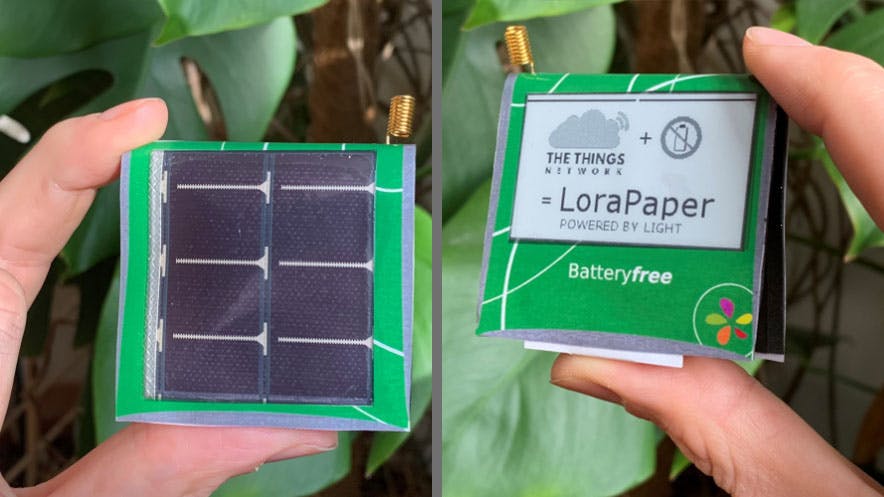
LoraPaper Is a Connected ePaper Device That Runs Entirely on Light
from hackster.io
LoraPaper is an E Ink unit that connects to the Internet, displays information, and only requires ambient light to function. The creator is Robert Poser, who is passionate about ePaper displays, and it shows. His self-sufficient node sends and receives information with The Things Network (TTN). It uses the LoRa protocol, which is ideal for devices that need long-range communication while using minimal power.
Poser's original design used a 1.1-inch screen. However, in time for the recent The Things Conference, he upgraded the screen to a 2.1-inch display. (Sure looks like an option for a low-power badge, doesn't it?) Other hardware includes a solar panel, an energy harvesting charge controller, a supercapacitor, and an ATmega328P.
Designed for energy harvesting, the AEM10941 controller manages DC power from up to seven solar cells. It can provide regulated voltage supplies while also charging a backup energy storage device, such as a battery or, in LoraPaper's case, a supercapacitor.
The microcontroller is the same one found in the Arduino Uno and Nano. So, you can program LoraPaper with the Arduino IDE. Regarding power consumption, it was surprising to see the ATmega328P is running with a 16 MHz ceramic resonator. Generally, low-power means a slower clock speed, so it speaks to the low-power nature of the ePaper display and LoRa radio.The primary example that Poser provides is a low-power weather station display. Remember, its only source for power is ambient light. Check out the LoraPaper GitHub for examples, schematics, and instructions.
Finally - to keep up to date with interesting news, offers and new products - interact with us on facebook, instagram, and twitter.



Leave a comment